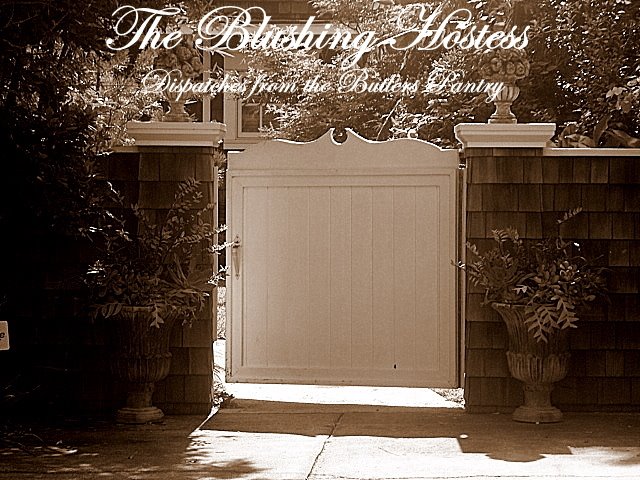There are, as Louis Osteen noted, some foods which will be there always; the food of your life, he called it. Here in Charleston, the buttermilk biscuit has been present and will be at every moment, every turn. It is with us at church coffees, funeral teas, holiday parties, and of course, mornings at home.
There is an old tradition as old as the biscuit itself, perhaps, that the cook or baker of any beloved thing will leave out an ingredient or a step. In that way, they will always be the keeper of the perfect biscuit, caramel cake, or praline. I've never subscibed to putting my name on a substandard product, so here is everything I know about the biscuit. You'll find it in the over, in some form,twice a week at least. It is the great cameleon of every table if well understood to the baker and hostess.
So, now. With biscuit recipes, the omission is always in the condition of the ingredients: It does, absolutely, matter that the fats are cold as can be. Butter, creams, and buttermilk - for biscuits or scones - has to be as cold as possibleto create flaky layers in the crumb.
You can take that to the bank. Great fortunes have been built on far less.
Blushing's Cheddar Biscuits
Makes 9
2 cups self-rising flour, more for dusting the bench
5 tablespoons butter: 4 tablespoons cut in small cubes abd very cold, 1 tablespoon melted (microwave it for 15 seconds)
¼ cup cream cheese, cold and cut into small cubes best you can
¾ cup buttermilk
1/2 cup sharp cheddar cheese, shredded and kept cold
1 teaspoon garlic powder
1. Preheat the oven to 450 degrees.
2. Measure the flour into a large bowl. Incorporate the cubed butter, then the cream cheese into the flour, using your fingers to “cut in” the butter and creamcheese until the mixture resembles cottage cheese. Add the cheddar and garlic powder, incorporate quickly and completely. It will be chunky with some loose flour at the bottom of the bowl.
3. Add the buttermilk. incorporate with a spoon or spatula.
4. Flour your bench well. Turn the dough out on to your floured surpace and just pat it down gently with your hand until it's even. Be quick! You want about 1 1/2 inchesin height. Don't roll it out. Don't handle it any more than that - you are trying to keep the fats cold.
5. Flour a biscuit cutter or glass. Cut straight through the dough with the cutter, to maximize the number of biscuits cut from this first pat out. Re-incorporate pat out the excess dough after the biscuits are cut and cut out more biscuits. Put the biscuits in a cast-iron pan shoulder to shoulder, they help each other to rise.
6. Place the pan in the oven and bake 15 minutes, until light brown. Remove from the oven and brush the biscuit tops with the melted butter.
2. Measure the flour into a large bowl. Incorporate the cubed butter, then the cream cheese into the flour, using your fingers to “cut in” the butter and creamcheese until the mixture resembles cottage cheese. Add the cheddar and garlic powder, incorporate quickly and completely. It will be chunky with some loose flour at the bottom of the bowl.
3. Add the buttermilk. incorporate with a spoon or spatula.
4. Flour your bench well. Turn the dough out on to your floured surpace and just pat it down gently with your hand until it's even. Be quick! You want about 1 1/2 inchesin height. Don't roll it out. Don't handle it any more than that - you are trying to keep the fats cold.
5. Flour a biscuit cutter or glass. Cut straight through the dough with the cutter, to maximize the number of biscuits cut from this first pat out. Re-incorporate pat out the excess dough after the biscuits are cut and cut out more biscuits. Put the biscuits in a cast-iron pan shoulder to shoulder, they help each other to rise.
6. Place the pan in the oven and bake 15 minutes, until light brown. Remove from the oven and brush the biscuit tops with the melted butter.
Tips for making great biscuits:
1. Remember: Cold butter, cheese, and buttermilk are key.
2. Cast iron pans make the best baking surface.
3. It doesn't matter so much what brand of self-rising flour you use, but it makes all the difference that it is new flour. The baking powder and salt wll loose effectiveness over time. Try to keep up with its age in the pantry.
4. The recipe above is my favorite with ham and bacon. The same recipe with just a bit of chopped rosemary and gruyere instead of cheddar and garlic is also delicious. And finally, a rosemary biscuit with butter and peach preserves is what I know about indulgent, incredible biscuit combinations.





No comments:
Post a Comment